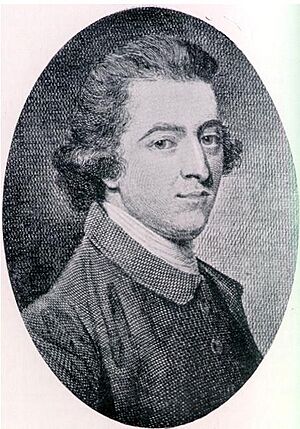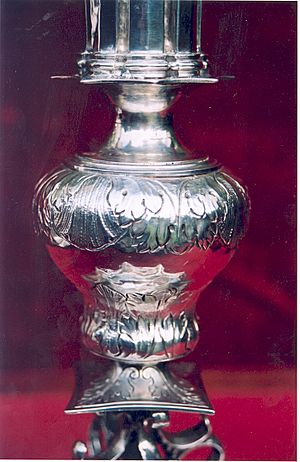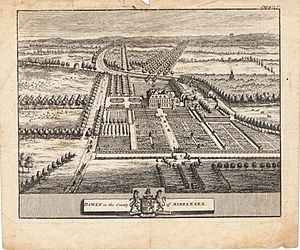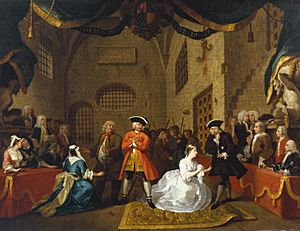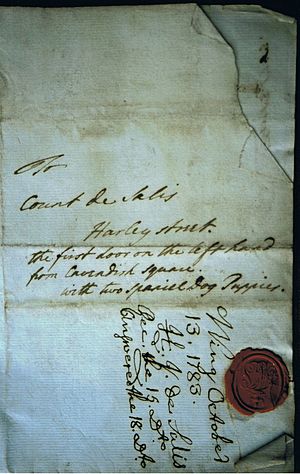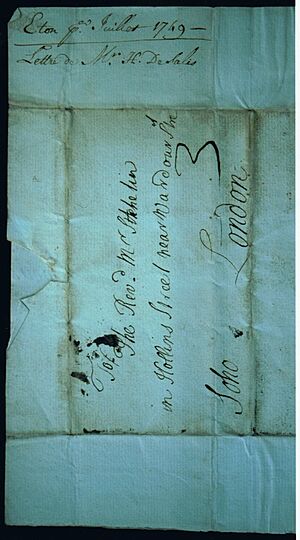Henry Jerome de Salis facts for kids
Henry Jerome de Salis (born August 20, 1740 – died May 2, 1810) was an important English churchman. He was a Fellow of the Royal Society (FRS) and a Fellow of the Society of Antiquaries of London (FSA). He served as the Rector of St. Antholin in the City of London and as the Vicar of Wing in Buckinghamshire. People knew him by several names, including Dr. de Salis and, later in his life, Rev. Count Henry Jerome de Salis.
Contents
Early Life and Education
Henry Jerome de Salis was the second of four sons. His father was Jerome, Count de Salis-Soglio. His mother was Mary Fane, whose father was Charles, first Viscount Fane. Mary's uncle was the famous soldier and statesman James, Earl Stanhope.
In 1753, Henry and two of his brothers, Charles and Peter, went to Eton. He left Eton around 1757. After that, he studied at Queen's College, Oxford, where he earned his first degree in 1760. He later received his Doctor of Divinity (DD) degree in 1777.
Church Career and Public Service
Henry became a priest in the English Church in Ireland in 1760. His uncle, Lord Fane, made him the Vicar of Fedamore in Ireland that same year. He held this position until 1774 or 1775.
In 1763, he became a Chaplain to King George III. From 1774 until his death in 1810, he was the Rector of St. Antholin, Watling Street. In 1777, a relative, the fifth Earl of Chesterfield, appointed him Vicar of Wing in Buckinghamshire. He stayed in Wing until he passed away in 1810.
Henry was elected a Fellow of the Royal Society (FRS) on May 3, 1770. This is a very respected group for scientists. Many important people supported his election. He was also a Justice of the Peace (JP) for Buckinghamshire, which meant he helped keep law and order. He supported important charities like the Society for the Propagation of Christian Knowledge (SPCK) and the Society for the Propagation of the Gospel (SPG). These groups worked to spread Christian teachings.
In 1798, Henry inherited a version of William Hogarth's famous painting, The Beggar's Opera. He received it from a friend, Rev. Thomas Monkhouse.
Life Events and Family
In 1775, Henry's parents made him the gamekeeper for their land near Hayes, Middlesex. This meant he was in charge of the hunting and wildlife on their property.
In a letter from 1771, Henry described a grand party held by Lord le Despencer at West-Wycombe. He wrote that the music was amazing and the weather was beautiful. He mentioned a new Temple of Bacchus that was opened. It was decorated by Mr. Dance the painter. Henry said there were thousands of people there, and it felt like a royal party from Versailles.
Marriage and Children
Henry married Miss Julia Henrietta "Harriet" Blosset on November 17, 1775, at St. Antholin. Harriet came from a well-known French Protestant (Huguenot) family.
Before marrying Henry, Harriet had been promised marriage by Sir Joseph Banks in 1768. Sir Joseph Banks was a famous explorer who traveled with Captain Cook on the ship Endeavour. When Banks returned in 1771, he no longer wanted to marry Harriet. He paid her money as compensation.
Harriet's older sister, Bella, married Rev. Henry Peckwell in 1773. Their daughter, Selina, later became the mother of the famous historian George Grote.
Henry and Harriet had one child, a daughter named Henrietta, born in June 1779. Sadly, Henrietta died young on March 31, 1785. She was buried in the family tomb at Harlington-under-Heathrow, Middlesex. This church is very close to Heathrow Airport.
After his father died in 1794, Henry had a disagreement with his elder brother Peter. However, Henry later made up with Peter's sons, especially his nephew Jerome.


